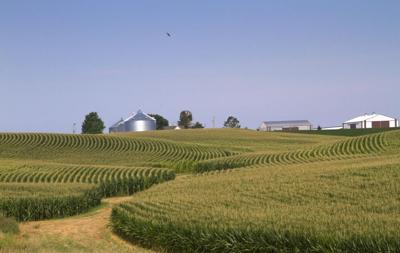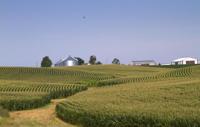DOWN TO BUSINESS - Doris Mold thought she’d see a “nudge upward” in the number of women counted as farmers in the government’s latest agricultural census.
The data, pegged to 2022 and released earlier this year, showed 1.2 million female producers nationally, or 36% of all producers, about par with the last census in 2017. The U.S. Department of Agriculture conducts the census every five years, counting operations selling $1,000 or more of agricultural products annually.
The last census saw a particularly big bump in women’s numbers after questions were reframed to encompass their work on farms and ranches — an effort Mold contributed to.
Mold, co-owner/operator of a family dairy farm in Minnesota, has a lengthy resume, including running an agricultural consulting firm, teaching in a University of Minnesota program that exposes international students to U.S. farming and ranching, and serving as co-CEO of Annie’s Project, a nonprofit that offers courses and networking to female farmers and ranchers that county farm-advisory groups often recommend.
She was part of an expert panel that advised on census questions, tweaking them for 2017 to better reflect not only what roles women were playing but also those of younger and beginning farmers. Additional changes came in the 2022 census.
“I was a little surprise that the percentage of women farmers overall had not really increased [in 2022],” she said in response to my email.
Last summer, Mold was a keynoter at the annual Minnesota Farmfest, a multi-day national trade show that attracts thousands.
A video of her talk, “Out of the Shadows,” part history lesson and part pep talk, shows her gently chastising the industry for not giving farm women their due. The ag census didn’t tabulate by gender until 1978, she said, the assumption being the farmer was a guy, likely with a family, but only he was counted.
“Women aren’t and haven’t been viewed as the farmers,” she said then, with women taking a back seat: the bookkeeper, the transition planner, the go-fer who held things together.
Even with the changes to the ag census, Mold told me she believes the number of women in farming is still underreported. That could be “because they don’t see themselves as a farmer,” or family or societal pressure keeps them from checking the box of farmer.
Further ag census results will be released by the government throughout the year, with a deeper dive into the gender numbers planned in June.
State and county profiles released in March show that fewer farms and ranches were counted in New York in 2022 while the total value of crops and livestock rose, both mirroring the trend nationally.
And for the state and two core Capital Region counties, more women were counted as producers in 2022 than in 2017. For New York, the number of women was up by a dozen or so, while the number of male producers dropped by 300.
Meantime, Rensselaer and Saratoga counties both saw the number of female producers rise between censuses: to 401 in Rensselaer County in 2022, from 317 in 2017, and to 490 in Saratoga County, from 418.










